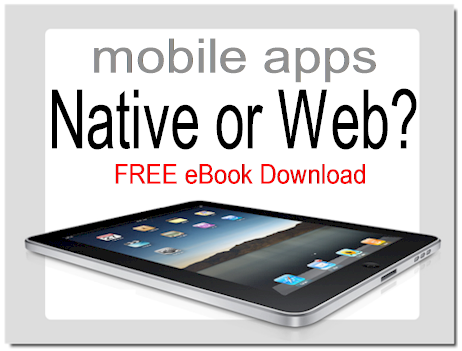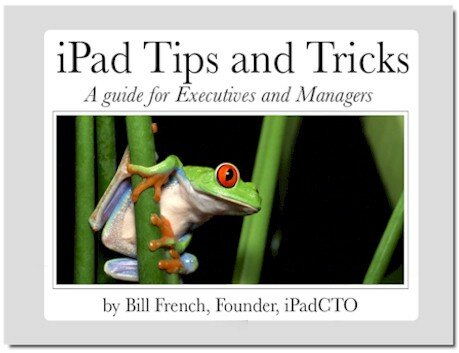Joe Wilcox recently had this to say on Google Plus:
“I have to really thank Apple for something. The company instituted restrictive–and some would say anticompetitive–rules against Amazon and other e-booksellers. It was give up 30 percent of proceeds or get out of the iOS App Store. They got out of selling books within their iOS apps by way of external links. But today, Amazon responded by releasing a terrific HTML5 app that’s every bit as good for buying and reading ebooks (www.amazon.com/cloudreader). And, whoa, it works on Chrome OS, so now I can read Kindle books on my Chromebook. Fantastic! Thank you Apple for screwing your partners–eh, ebook competitors.”
Joe writes some great stuff and I follow his commentary very closely. However, as is typically the case in politics and religious debates, many who jump to these viewpoints haven’t really considered the complete historical perspective. It’s important to point out that the restrictive rules he cites were instituted on June 10, 2007, the day the App store opened.
 Before assuming that Apple has screwed its partners, I think it would be wise to revisit Steve Jobs’ WWDC 2007 keynote address where he called for developers to build apps for iPhone (1) that are web-based using open web standards. He did not suggest or envision at that time, that native apps would be an option for mobile app developers or even possible on iOS by third parties or self-proclaimed partners.
Before assuming that Apple has screwed its partners, I think it would be wise to revisit Steve Jobs’ WWDC 2007 keynote address where he called for developers to build apps for iPhone (1) that are web-based using open web standards. He did not suggest or envision at that time, that native apps would be an option for mobile app developers or even possible on iOS by third parties or self-proclaimed partners.
It wasn’t until late 2007 that Apple was forced to reconsider the idea of opening up native access to the OS. Developers and vendors (including Amazon), lobbied Apple to open the back door and allow apps that make native calls to low-level hardware-based functionality. These demands from third-party companies and developers called for Apple to give everyone (not just internal Apple software engineers) a fair shot at creating innovate apps with the advanced iPhone hardware and OS.
On October 17, 2007, in an open letter posted to Apple’s "Hot News" weblog, Steve Jobs announced that a software development kit (SDK) would be made available to third-party developers in February 2008. [ref]
With trepidation, Apple opened the SDK floodgates and a surprising thing happened – an app store and hundreds of thousands of apps emerged. Apple was as surprised as analysts were at the surge and frenetic pace of mobile app development on iOS. Apple reacted swiftly to embrace this trend but it had already established very tight guide posts that everyone had to abide by if they wanted the same OS and hardware access that Apple enjoyed.
As Jobs said at WWDC 2007…
“We have been trying to come up with a solution to expand the capabilities of the iPhone so developers can write great apps for it, but keep the iPhone secure. And we’ve come up with a very sweet solution. Let me tell you about it. An innovative new way to create applications for mobile devices… it’s all based on the fact that we have the full Safari engine in the iPhone.”
Steve went on to say that there was no SDK for iPhone because it wasn’t necessary.
“And so you can write amazing Web 2.0 and AJAX apps that look and behave exactly like apps on the iPhone, and these apps can integrate perfectly with iPhone services. They can make a call, check email, look up a location on Gmaps… don’t worry about distribution, just put ‘em on an internet server. They’re easy to update, just update it on your server. They’re secure, and they run securely sandboxed on the iPhone. And guess what, there’s no SDK you need! You’ve got everything you need if you can write modern web apps…”
The 2007 WWDC keynote and transcripts of subsequent interviews with Jobs did not envision or even consider the idea of an app market model that would eventually emerge as a result of popular demand to access the hardware in ways that web protocols would not allow.
History shows that Apple didn’t want competitors, or partners for that matter, on the iOS platform. They agreed to allow it with very clear constraints and only after competitors and self-proclaimed "partners" begged them for access. The terms (established on June 10, 2008) allowing the development and promotion of native apps (by Apple) were unambiguous –
The applications can be downloaded directly to a target device, or downloaded onto a PC or Mac via iTunes. 30% of revenue from the store go to Apple, and 70% go to the producer of the app.[ref]
The native app movement rapidly escalated with a bazillion other developers who only wanted a fair opportunity to participate in creating innovative solutions the same way that Apple engineers were allowed to.
My version of reality suggests Apple is quite happy with competitors – indeed everyone – exercising the freedom to leverage Apple devices to their advantage using open HTML standards. This was Steve’s vision from the beginning.






















One thing I’d point out, however, is that when Steve was announcing this, there was no way to put a link to a website on the iPhone main screen. I think this is what developers were interested in more than anything else.
Yeah, you could have the user type in “www.mycoolwebsite.com” into their browser. But wouldn’t it be great if you could just tap something on your home screen and have it go there? But you couldn’t do that. Only Apple could do that.
Apple finally added that capability in 2.0, to go along with Apps. But at that point, Apps were cool. Web pages, not so much.
Peter,
True, access to the home screen was important, but Apple didn’t need to create an SDK and build an app store to achieve that. They did so because there was a huge outcry for equal access to the device primitives.